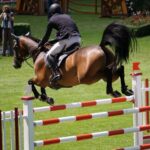Picking the right camera can make or break plantation surveillance. Indoor and outdoor areas each come with unique challenges.
Whether it’s low light inside or harsh weather outside, your camera specs must match the environment. But how will you know which specs to look for? That we’ll find out!
In this article, we will break down the must-have features when setting up surveillance for interior vs exterior areas of a plantation. Ready to keep your plantation secure, day and night?
Let’s dive in!
Resolution
When it comes to plantation surveillance, higher-resolution cameras are essential. They capture more detail, making it easier to identify faces or read license plates.
For indoor areas, higher resolution helps when monitoring large rooms or storing detailed records. You can even zoom in on small details without losing image quality. This is useful in spaces with valuable assets or restricted access.
In outdoor areas, high resolution enhances large perimeter monitoring and captures fine details from a distance. Also, having night vision enables easy detection of movements or intrusions, regardless of weather or lighting.
Low-Light Performance
For interiors, cameras with adjustable exposure or WDR are vital for clear footage in varying light, preventing blind spots. For exteriors, top-notch low-light performance is key for night monitoring.
Cameras with infrared sensors or IR cut filters ensure clarity in darkness, minimizing false alarms. Plus, it is invisible to the human eye, so it won’t disturb any nighttime activities on the plantation.
Weather Resistance
Look for cameras with an IP rating of 66 or higher, indicating protection against dust and strong jets of water.
If you intend to use it outdoors, you may want to consider cameras with a built-in heater for extreme cold temperatures. This ensures the camera stays operational even in freezing conditions.
For indoor areas, a weather-resistant camera may not be necessary. However, it is always good to have some level of protection against unexpected events like water leaks or accidental spills.
Field of View
The FOV of a camera dictates the extent of the visible area it can cover. For indoor surveillance, a wide-angle lens is beneficial for monitoring expansive rooms or hallways, allowing a single camera to cover more ground.
Additionally, narrower FOV lenses can be used for focused areas such as entrances or cash registers. For outdoor spaces, a comprehensive FOV is even more crucial. A wide-angle camera can reduce blind spots and the number of cameras needed.
Furthermore, PTZ cameras are ideal for monitoring large outdoor areas. For instance, oil gas industry surveillance systems often use these cameras to oversee expansive and potentially hazardous areas effectively.
This way, they can zoom in on any activities for closer inspection.
Motion Detection and Alerts
If you’re using the camera outdoors, consider those with adjustable sensitivity levels. This will help prevent false alarms caused by things like:
- moving branches
- shadows
- small animals
For interior surveillance, audio detection is another feature to consider for added security. This triggers an alert when the microphone detects sounds of danger like glass breaking or someone screaming.
Exploring the Differences Between Interior vs Exterior Surveillance
Choosing the right camera for your plantation can be daunting. This is the reason why understanding the differences between interior vs exterior surveillance is crucial.
The right specs make all the difference. So don’t overlook the power of good surveillance. Start to enhance your plantation’s security today and see the benefits for yourself.
Did you find this article helpful? Check out the rest of our blog now for more!















